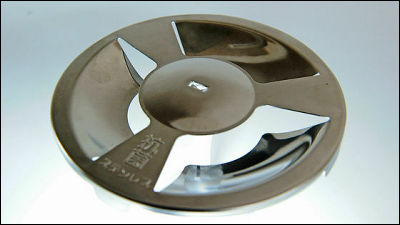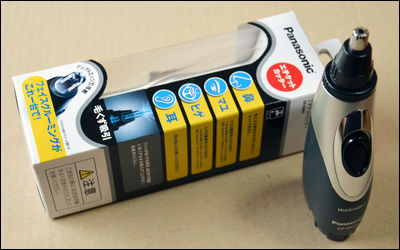I actually sharpened the knife with 'Kyocera Fine Sharpener SS-30' which revives the sharpness of the blade with 150 reciprocating sound wave vibrations per second

If you cook with a kitchen knife with poor sharpness, the ingredients may not cut and you may accidentally slip your hand and be injured. Complaints were raised that the editorial department's kitchen knife was not even a chocolate cake, so I bought “ Kyocera Fine Sharpener SS-30 ” and sharpened the blade.
Fine Sharpener SS-30 | Ceramic Kitchen / Daily Goods | KYOCERA
The following movies show the effects of Kyocera Fine Sharpener SS-30. The sharpness can be revived by using a fine sharpener for knives that were difficult to cut tomatoes.
Sharpening the knife with `` Kyocera Fine Sharpener SS-30 '' changes so much-YouTube
This is the “Kyocera Fine Sharpener SS-30” package.
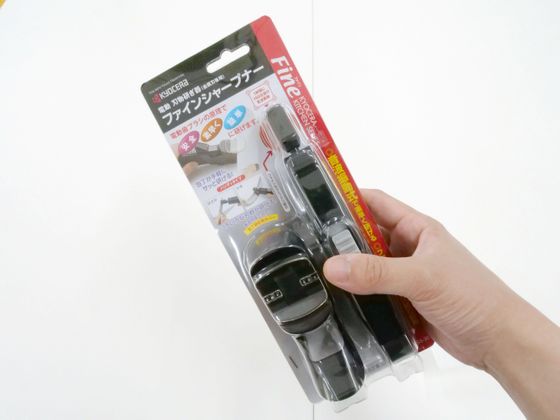
Inside was a knife sharpening cover, body, and instruction manual with warranty card.
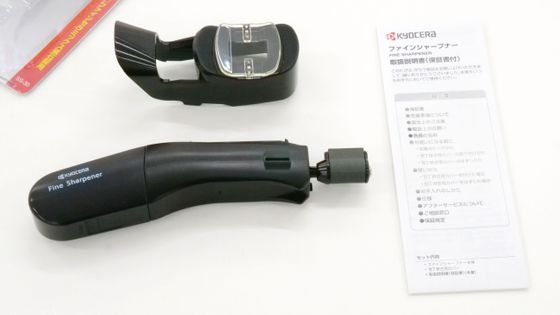
The body looks like this. It looks like an electric toothbrush with a slightly warped shape.
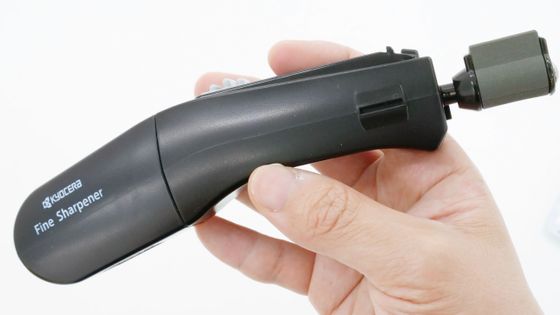
A tip is attached to the tip.
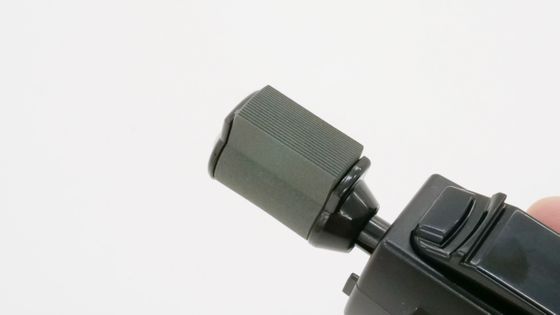
Set two optional AA batteries and close the lid to prepare.
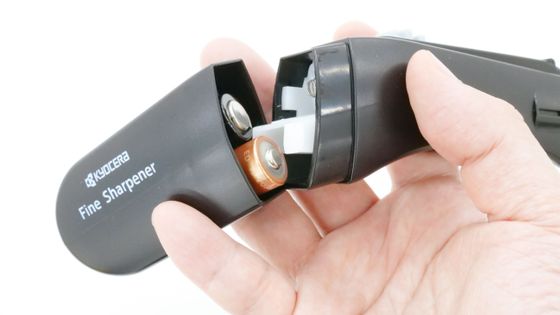
The fine sharpener with battery weighed 158g.
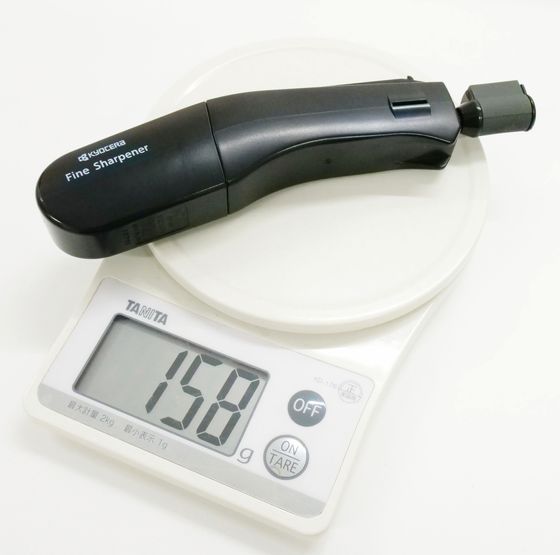
The fine sharpener is turned on when the switch on the handle is turned on.
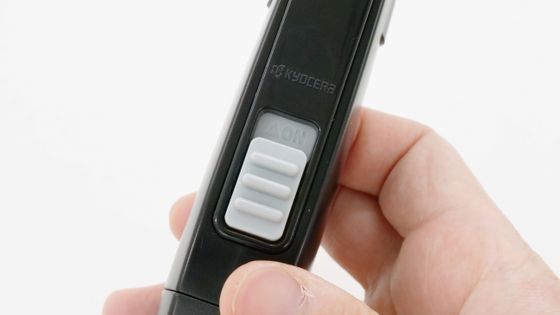
The following movie actually tried turning on the power. It seems that the grindstone is stationary in the movie, whether the sonic vibration of 150 reciprocations per second is too fast, but the vibration is transmitted to the hand with the driving sound of “Boon”.
When you turn it on and put it in the water of a glass, you can see that ripples are born and the fine sharpener vibrates at high speed.
You can see how it vibrates when you turn on `` Kyocera Fine Sharpener SS-30 '' and put it in water-YouTube
So, to see how much sharpness changes when sharpening a knife with a fine sharpener. As a result of using it for many years, this knife has become so sharp that it became the trigger for this review.
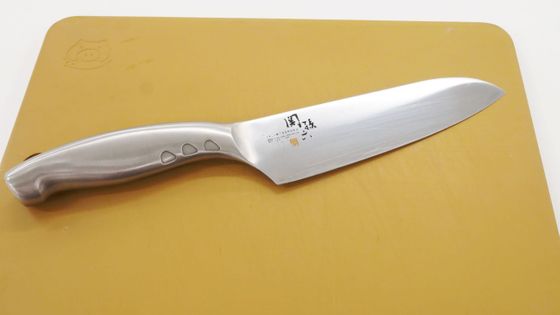
This is a movie that allows you to check the desperate sharpness. It used to be a knife that cuts well, but now it's hard for the blade to pass through a thin piece of tomato skin. This knife has been used many times in reviews of dishes, but I don't want to imagine how much time and effort was wasted because of this sharpness.
To sharpen this knife using a fine sharpener. When sharpening a knife with a fine sharpener, attach the included “knife sharpening cover” to the body.

Insert the shaft part of the base of the grindstone firmly into the groove of the knife sharpening cover and press it to complete the setting.
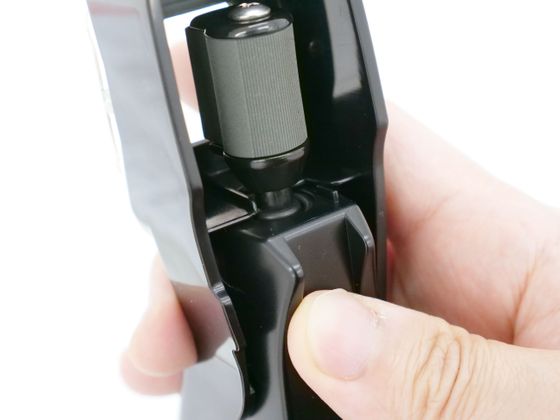
Fix the main body by hand from a flat place, turn on the switch, and insert the blade into the insertion slot of the knife sharpening cover. Pull the knife slowly toward you to sharpen the knife. You can check the actual usage in the following movie.
There are two slits through which the blade passes, and it is possible to sharpen the knife with both edges. Ceramic knives cannot be sharpened.
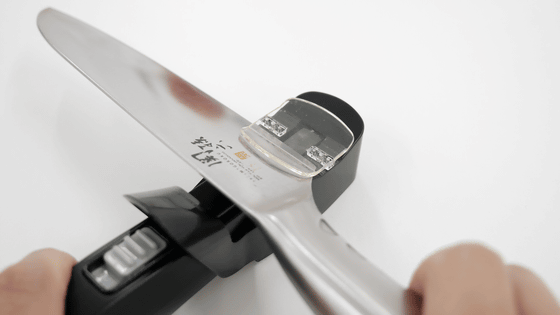
The grindstone was shaved when sharpened, and powder adhered to the fine sharpener and knife.
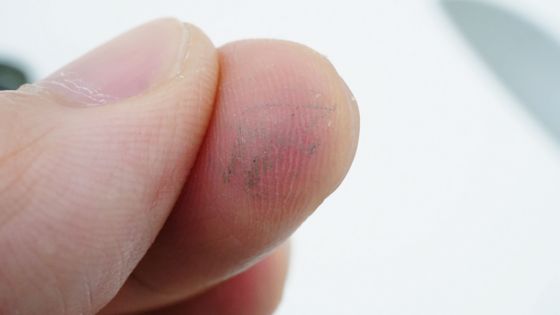
Wash the kitchen knife with water to remove the powder.

The following movie shows the tomato cut with a knife after sharpening both blades with a fine sharpener. The sharpness of the tomato has increased significantly and the tomatoes that have been struggling so much can now be cut.
If you sharpen both blades 6 times, the knife blade will go into the smooth tomato skin and it will be crisp without any effort.
A knife sharpened 6 times with `` Kyocera Fine Sharpener SS-30 '' can cut the tomato quickly-YouTube
The cutting surface is smooth because it is cut only with the sharpness of the knife without using force.
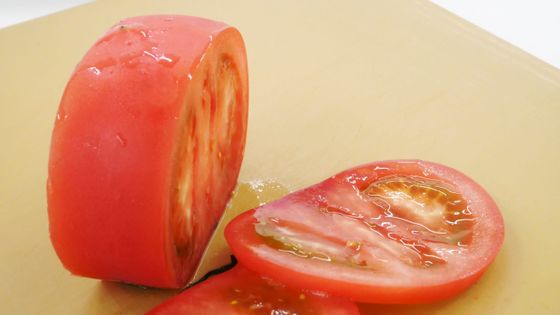
Comparing the blade of the knife before using the fine sharpener (left image) and after using (right image), the blade spilling is slightly smaller after use, and you can see that there are sharp marks at regular intervals. .
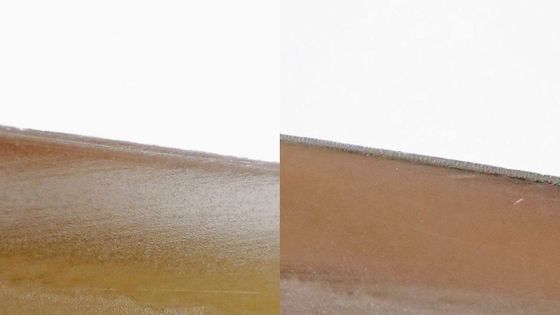
Next, cut the chicken thighs with skin. These knives are also used daily in the editorial department, but they have a reputation for being as dull as the previous knives.

First, cut it with the skin facing down ...

If you use the belly part of the blade, it will not cut easily.

Cut somehow using the cutting edge.
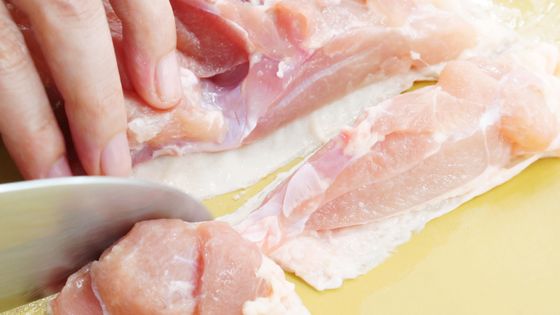
Now cut it with the skin up ...
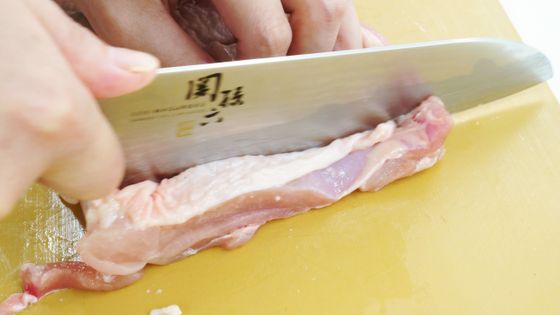
The blade slips on the skin, and this doesn't break. It seems to be cut if force is applied, but it gives up because it is dangerous.
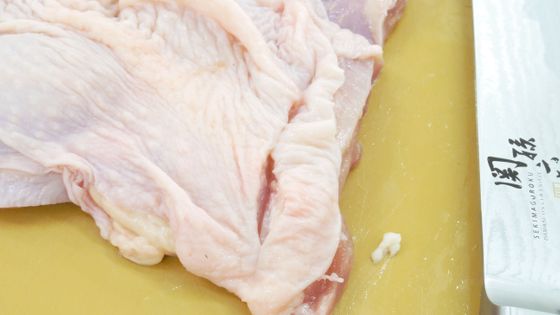
When I sharpened both blades with a fine sharpener three times and cut them, I could cut the skin without much effort, although it was not as severe as one.
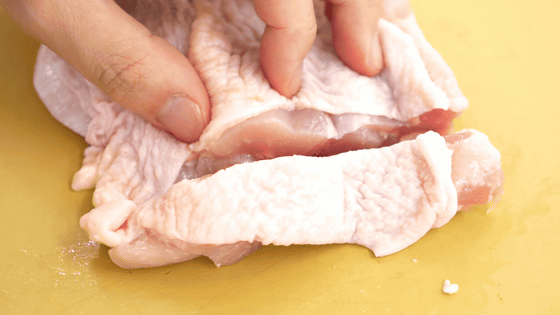
In addition to knives, fine sharpeners sharpen various tools such as scissors, sculpture nippers, peelers, cutters and sickles. I decided to sharpen the scissors that I bought at a 100-yen shop and used for a long time. Check sharpness before sharpening.

Cutting cardboard did not mean that it could not be cut, but it required considerable power.
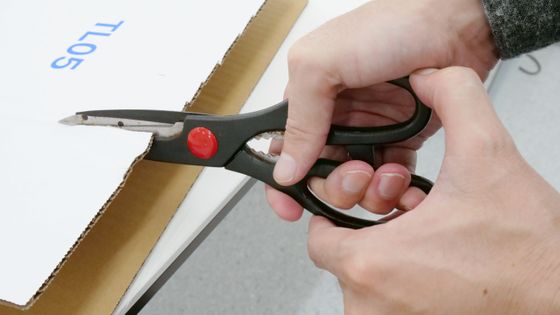
When sharpening scissors, only the “small blade” that is in contact with what you want to cut is sharpened.
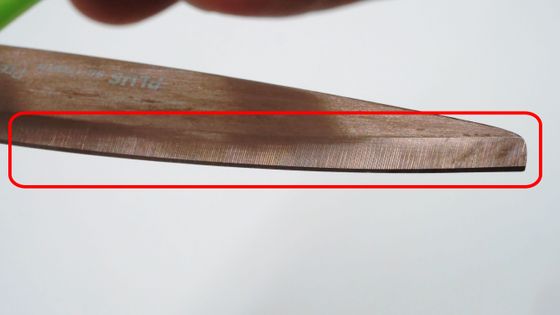
As you stroke the blade, gently press and sharpen the back of the grinding wheel of the fine sharpener.
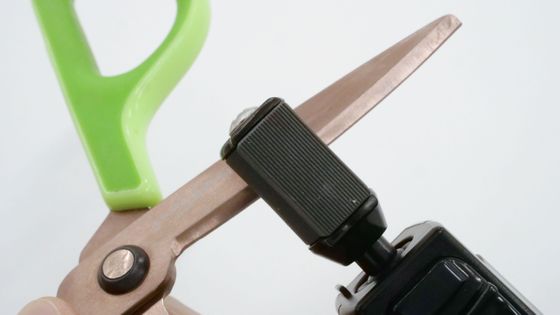
The following movie shows how scissors are actually sharpened.
Using sharpened scissors, although not dramatic, it was easier to cut.
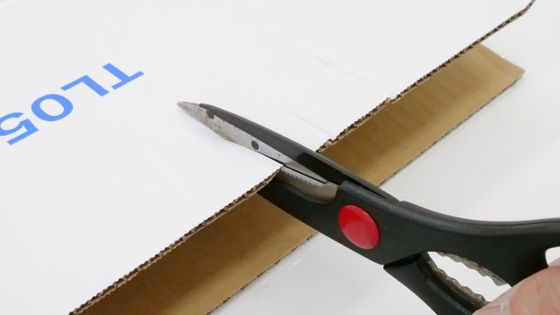
You can sharpen just by pressing the fine sharpener against the blade and moving it, so it is possible to sharpen blades that cannot be sharpened with an ordinary whetstone such as a peeler.
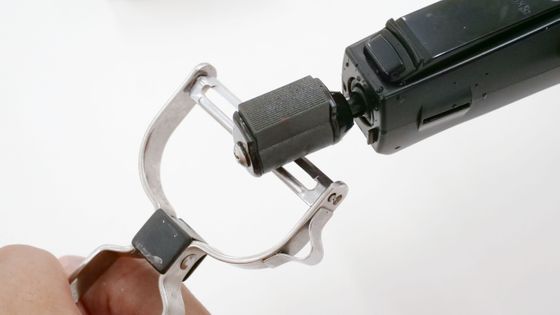
After using the Fine Sharpener, clean the knife sharpening cover, grindstone, and the shaft that attaches the grindstone to the body before storing.
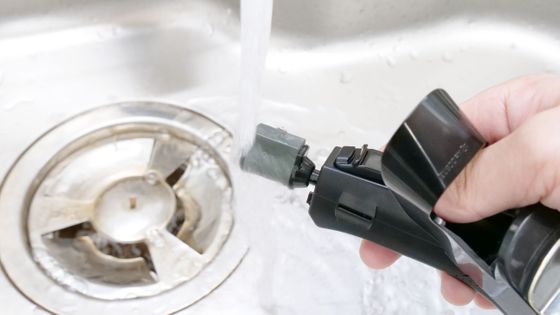
In order to maintain the sharpness of the knife, it is important to dry it immediately after use. Wipe with a dry cloth or paper towel, or dry the blade upside down as shown in the image to make the blade more resistant to rust.
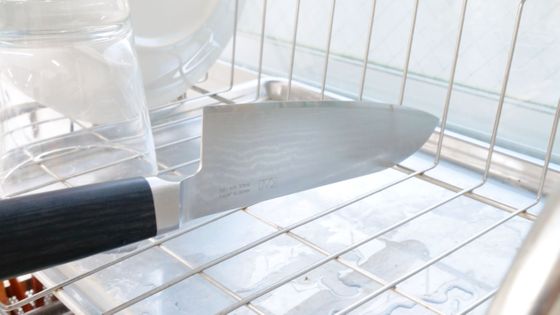
'Kyocera Fine Sharpener SS-30' can be purchased at Amazon.co.jp. The price was 1790 yen including tax at the time of writing the article, and the price of the replacement whetstone was 1080 yen including tax.

Related Posts:







